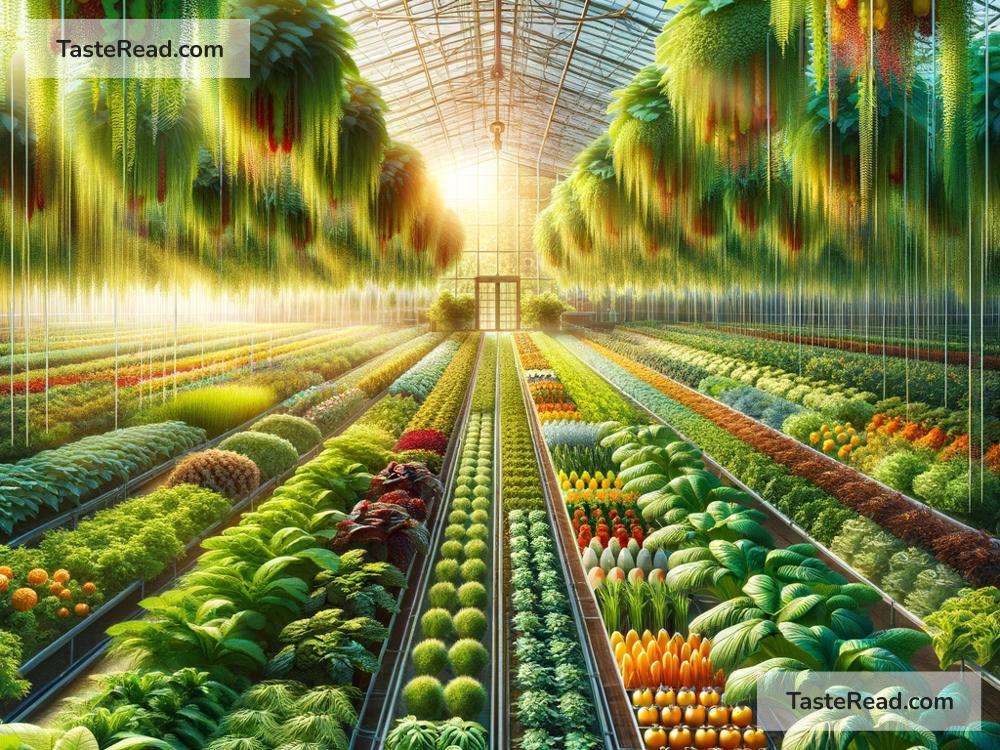Greening Up Your Table: How Greenhouses Bring Summer to Your Winter Plate
Picture this: It’s the middle of winter, the world outside is a palette of whites and grays, but on your dinner plate, there’s a burst of summer – tomatoes as red as July sunsets, cucumbers crisp and cool, and peppers in a rainbow of colors. You might wonder, “How is this summer magic happening in winter?” The answer lies in the marvel of greenhouses.
What’s a Greenhouse Anyway?
A greenhouse is like a magic house for plants. It’s usually made of glass or a clear plastic, and it can keep the inside warm even when it’s freezing outside. This warm house lets farmers grow fruits and vegetables all year round, no matter the season. Think of it as a summer bubble in the middle of winter!
The Magic Trick of Off-Season Produce
So, how do greenhouses pull off this magic trick? It’s all about controlling the environment. Greenhouses trap sunlight to keep plants warm, and they can even have special lights and heating systems for extra chilly days. Farmers can also control water, humidity, and sometimes even the CO2 levels to make sure the plants are as happy as they can be. This way, plants think it’s summer in December!
Why Do We Love Off-Season Produce?
- Freshness All Year: With greenhouses, we don’t have to wait for April showers or May flowers to enjoy fresh produce. We can have it whenever we want!
- Taste of Summer, Anytime: There’s something special about the taste of fresh produce that beats the canned or imported stuff. Greenhouses help keep our meals vibrant and delicious.
- Less Food Miles: Food that comes from far away can rack up a lot of “food miles,” which means it’s not so great for the planet. If we can grow it closer to home in a greenhouse, that’s a win for the environment.
- Supports Local Farmers: Buying greenhouse-grown produce can help support local farmers, which is always a good thing for the economy and the community.
Challenges of Greenhouse Farming
Of course, no magic trick is without its challenges. Running a greenhouse can be costly because of all the extra things needed, like heating and special lights. Plus, it takes a lot of energy, which can bump up the greenhouse’s carbon footprint. But, smart folks are working on ways to make greenhouses more energy-efficient and kinder to the planet, like using solar panels or finding better materials for the greenhouse itself.
Future of Greenhouses: Going Greener
As we keep finding new ways to be friendlier to our planet, greenhouses are also evolving. There are innovations like geothermal heating, where the heat from the earth itself keeps the greenhouse warm, and hydroponics, a way to grow plants in water instead of soil, which saves a lot of water and space.
The Takeaway
Greenhouses give us a taste of summer all year round, making sure we can enjoy fresh, local produce even when it’s snowing outside. They support local economies and can be a more environmentally friendly option than importing food from far away. While they do face challenges, especially with energy use, the future is looking greener with innovations that could help solve these problems.
So, next time you’re enjoying a crisp salad or a fresh fruit cup in the dead of winter, you might just have a greenhouse to thank for that burst of summertime on your plate. The magic of greenhouses is not only in how they defy seasons but also in how they might help us build a more sustainable, food-secure future.
Wrapping It Up
In a world where we’re increasingly aware of the impact of our choices on the planet, greenhouses offer a glimpse into a future where we can enjoy the bounty of the earth year-round without weighing heavily on our conscience. As we continue to innovate and improve, the role of greenhouses in our food system will only grow, bringing us closer to a reality where off-season doesn’t mean off-limits for enjoying fresh, tasty, and environmentally responsible produce.


